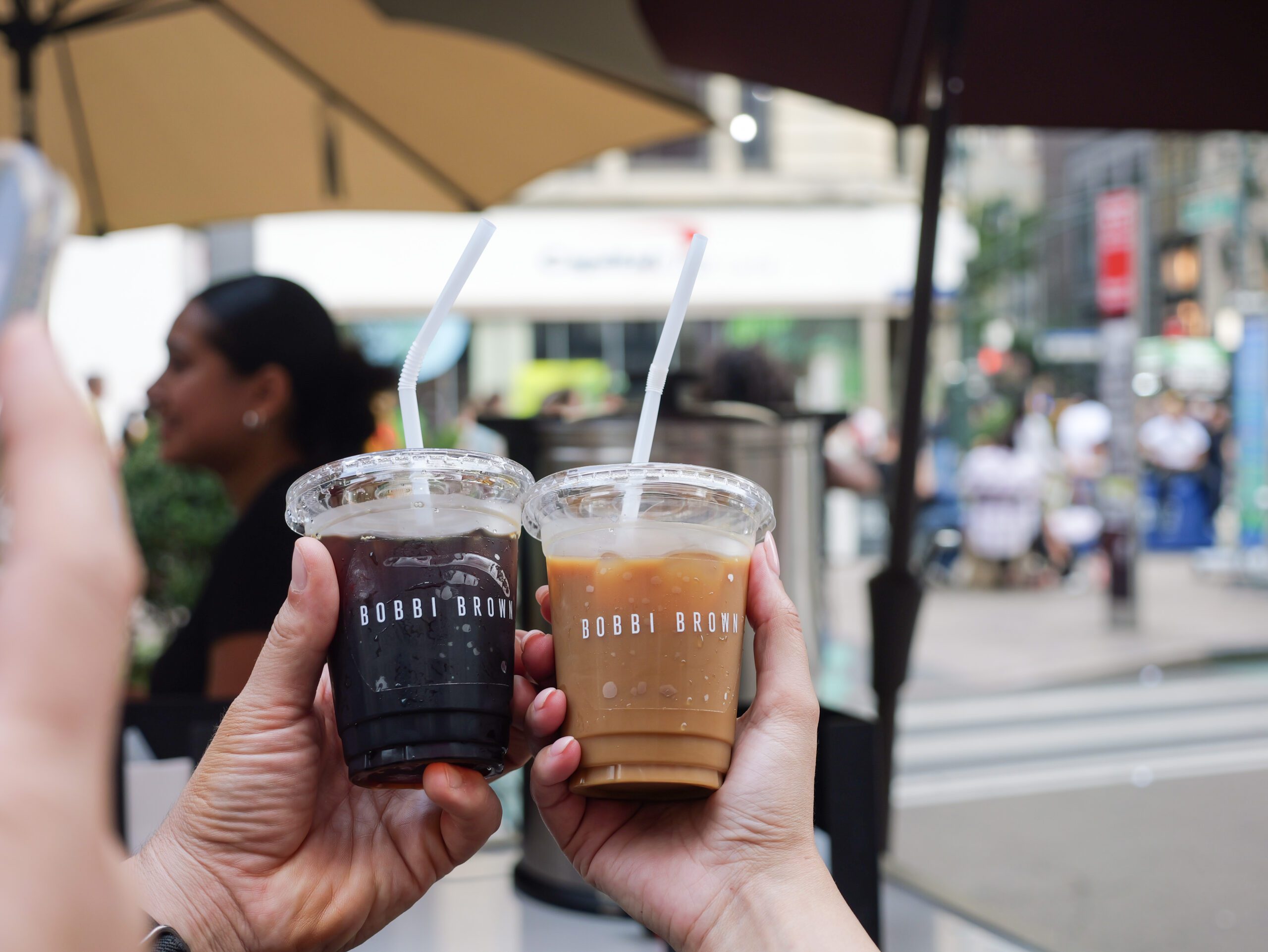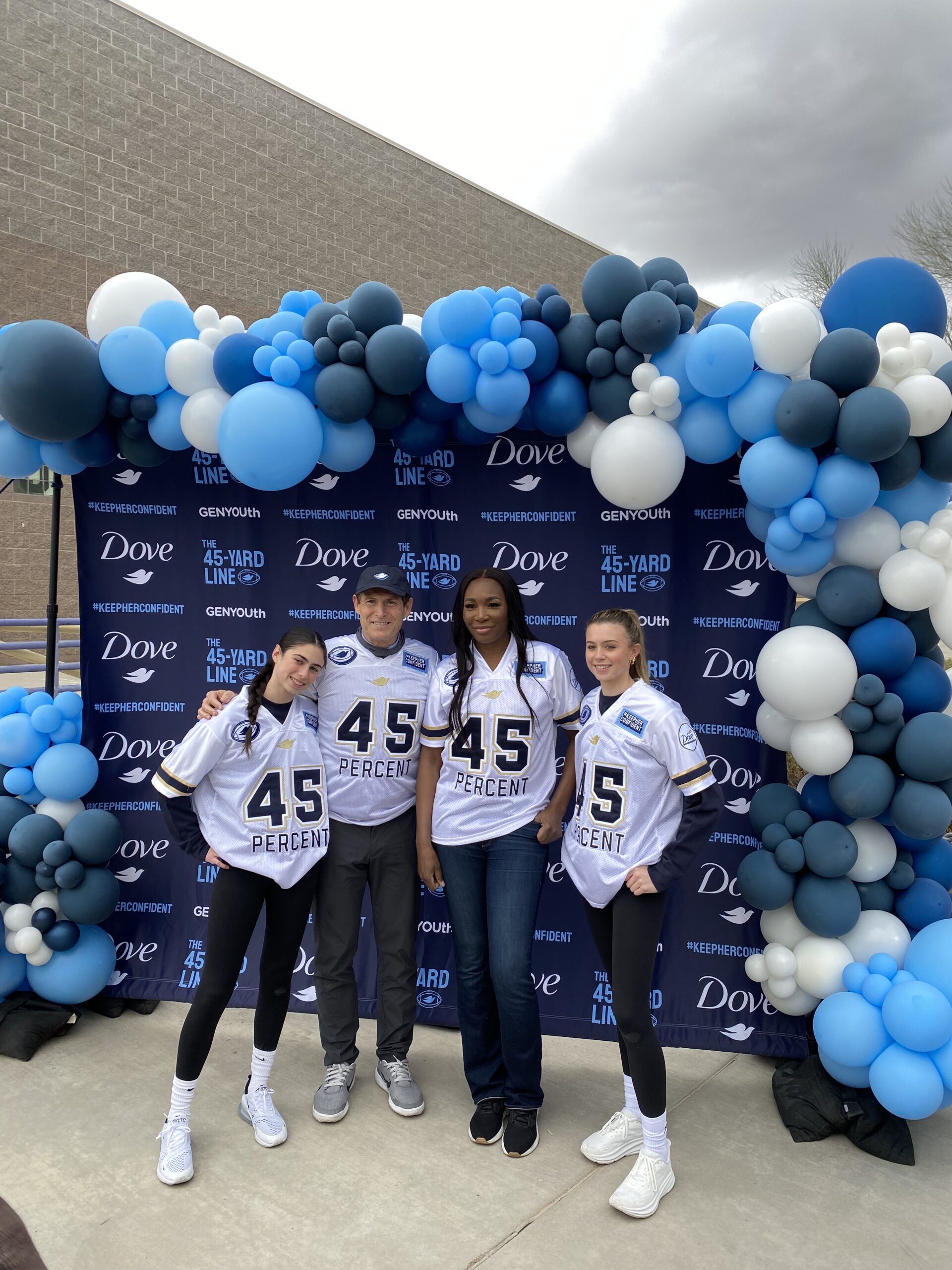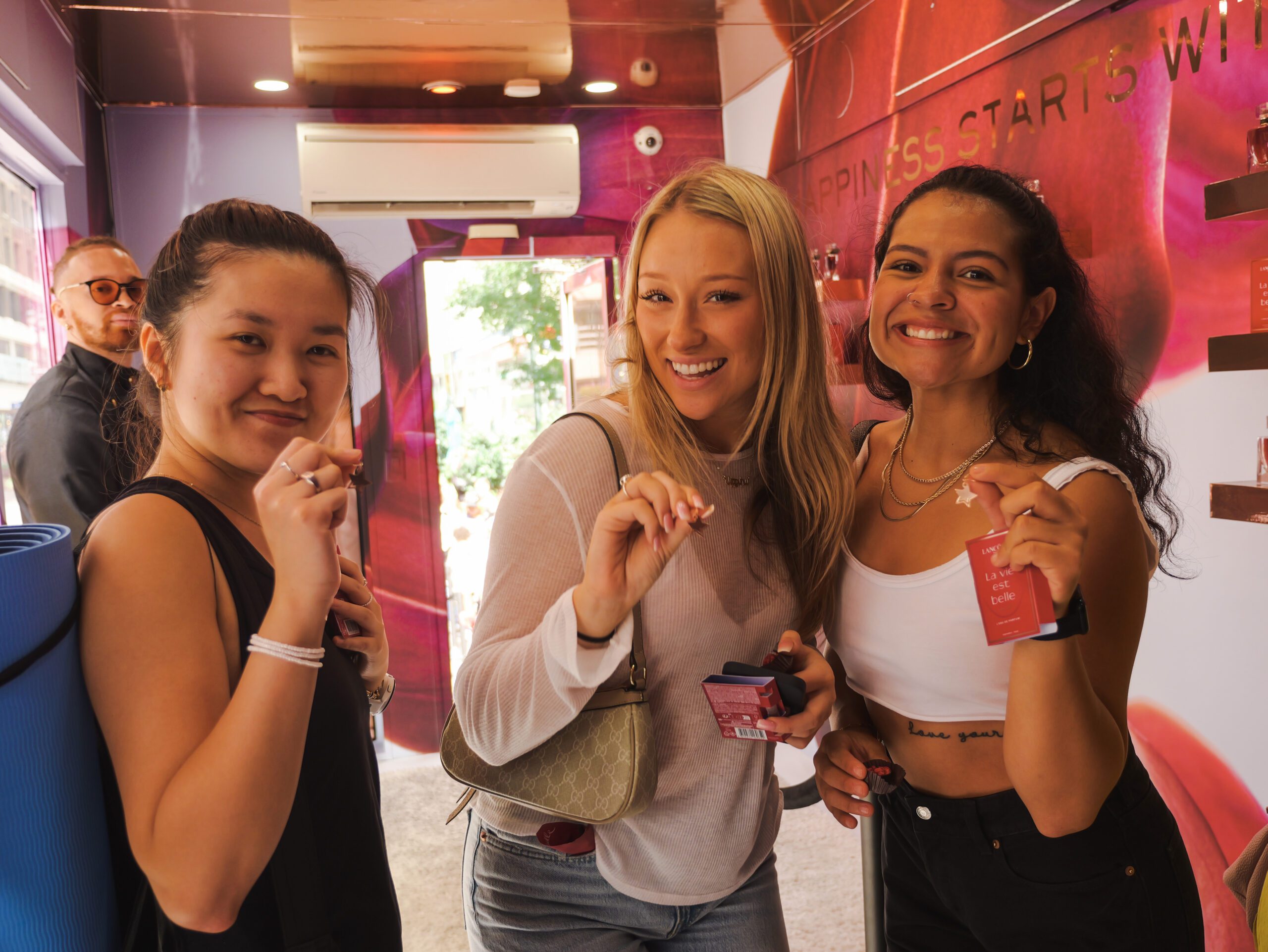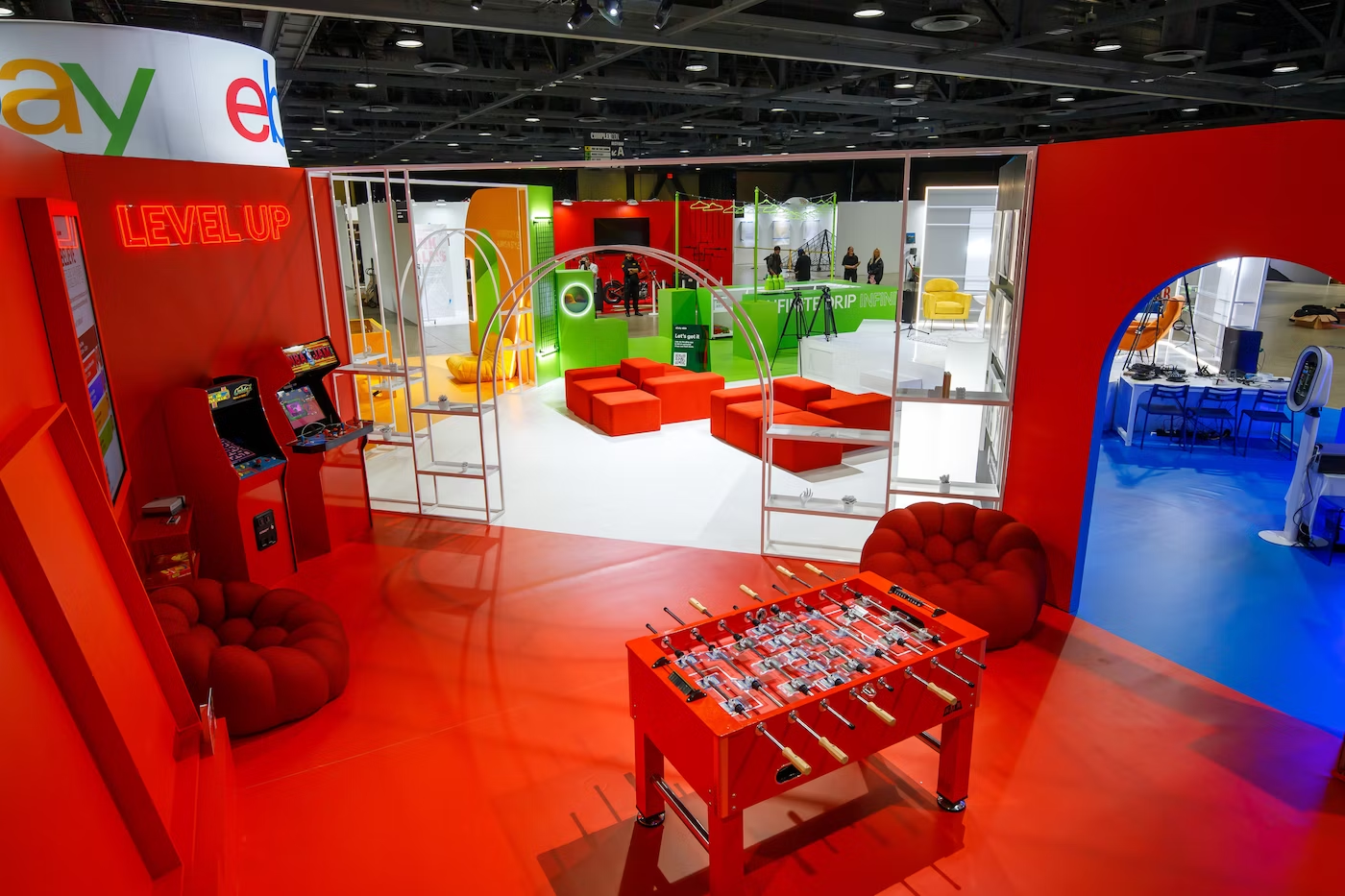
- Immersive Experiences
Add Immersive Depth with Custom Installations
Imagine online auction site eBay as a house — 2,500 square feet of vibrantly colorful, interactive rooms, each one highlighting a different category of popular eBay goods: collectibles, handbags, watches, sneakers, and other eBay mainstays. This house really exists — or it did, for two days in November 2023 at ComplexCon in Long Beach, CA.
Dubbed “the Hype House” by organizers, the house included five main spaces, each with a different color scheme and theme. “Each room of the eBay Hype House reflects the love collectors have for authentic products as they showcase them all throughout their homes,” according to a 2023 bizbash.com article. A vertically oriented all-blue bedroom served as a photo booth and featured sought-after books, concert tickets, a working Victrola, and sneakers. The all-red game room featured vintage arcade games, an early Nintendo system, and collectible cards. The bright-yellow office showcased luxury items via wall displays and a custom display case that let visitors visualize luxury watches on their own wrists.
“The space was unified by eBay-branded elements and ownable colors, and brought to life in an explorable, playful expression of the eBay brand and its sellers,” the article continues.
Now imagine yourself moving through this color-saturated space, with each room offering an inventive, wholly unexpected presentation of familiar items. Sound intriguing? Delightful?
That’s what custom installations bring to pop-up shops and other experiential marketing events: distinct visual and sensory worlds, each with its own look, feel, and flavor. Designed to delight visitors and make an indelible impression, custom installations are revolutionizing brand activations and pop-up shops by offering uniquely immersive experiences within experiences that not only captivate audiences but also amplify brand messaging, create buzz, and foster deeper customer engagement and participation.
Immersive sensory experiences and custom installations are the present and future of experiential marketing, but we didn’t get here overnight. Here’s how and why installations have evolved over the years, along with examples of how brands are incorporating them into their pop-ups and brand activations.
Custom Installations: a Quick History
In the 1990s and early 2000s, pop-up shops and brand activations were typically limited to major cities — NYC, London, Tokyo — and prioritized location and convenience over customer experience. They displayed products using basic shelving and displays and were aesthetically simple, with branding elements like logos and banners and not much else. The experience was much like shopping in any retail store, with an emphasis on sales staff and product demos as means of engagement. Their primary purpose for brands was promoting or testing products, merchandising, and services in a low-commitment way, according to a post by retail marketing/management firm BDS.
Beginning in the 2010s, however, brands more broadly began to realize the creative and aesthetic potential of the pop-up, and the power of the brand activations. Brands built narratives around products and pop-ups around themes, using multi-sensory elements like lighting, sound, and texture to engage visitors. Technology like touchscreens and social media integration further increased engagement.
Then the pandemic happened — a boon to e-commerce, but a heavy blow to brick-and-mortar shopping. In the few years since, pop-ups and brand activations have surged in popularity and importance, their purpose expanding beyond testing out new locations or products to “creating a more immersive brand experience that aims to make people excited about shopping in person again,” writes Maria Monteros for Modern Retail. “For many brands and retailers, [the pop-up] has become a space to learn more about their shoppers and a testing ground for new experiential features.”
Installations are designed to be Instagrammable, to drive user-generated content and online buzz. Often, they’re “incorporating trendy technology that could make the shopping experience more immersive and entertaining for shoppers, including AR try-ons, QR codes, and VR experiences,” Monteros writes. Both high- and low-tech pop-ups and activations collect and leverage data to help brands find out who their customers are and what they respond to in terms of not just products and services but experiences and aesthetics. And they’re a way to ignite customers’ imaginations — to forge connections between customer and brand through delightful, unforgettable, sometimes deeply moving experiences.
Immersive Marketing & Custom Installations
One way custom installations dramatically increase the impact and resonance of activations and pop-ups is by creating immersive experiences — mini-worlds full of unexpected images and information that both surprise and captivate audiences.
Immersive marketing is “designed to engage the senses and perception of individuals, making them feel part of a virtual or physical world,” according to UK-based agency Draw & Code. The immersive experience is constructed specifically to encourage participants to get fully invested in this alternate reality — to immerse themselves in it physically, as they explore the space, and emotionally, as they process the pleasant shock of seeing beautiful and interesting things they’ve never seen before. Think of immersive marketing as creating a fantasy world designed to capture visitors’ imaginations as well as attention.
Often, this fantasy world is based on our own, presenting familiar objects and spaces in novel and surprising ways that tie back to the brand meaningfully. One example: Promobile recently designed a pop-up shop for hair care brand Amika that featured shower- and bath-themed mini-sets — perfect for a product typically used in the shower or tub. These familiar, everyday spaces were made striking by Amika’s use of color — picture a bright blue bathtub in the center of a matching blue bathroom, with every surface and object the same color as that tub; you’ll recognize the space and its purpose, but the presentation is something new. If you’re like the consumers who passed through Amika’s pop-up shop, you’ll be drawn to that bathtub, you’ll take photos of it, and you’ll share them on social media.
The eBay Hype House is another example of rendering the familiar unfamiliar through the use of color — and also by tinkering with objects and surfaces in unexpected ways. The men on a foosball table were replaced by collectible cards; designer handbags were displayed in a wall-mounted glass box resembling a kids’ ball pit.
In other cases, the world created is our own, but purpose-specific — a principle demonstrated by two recent pop-ups:
In Brooklyn, NY, Pinterest and Anthropologie created a holiday-themed showhouse with rooms opulently decorated based on user data. One bedroom space was inspired by a sharp increase in searches for “winter bedroom aesthetic” on Pinterest; searches for “glam Christmas tree” inspired a particularly extravagant tree. “You walked in that house and you got there, you felt it. You’re like, ‘Oh my God, holiday!’” said one Pinterest exec, quoted in an eventmarketer.com article. “It’s filled with optimism, excitement, and everybody thinking forward, which is how we want people to feel about Pinterest. So putting that emotional connection with this kind of experiential moment is the goal.”
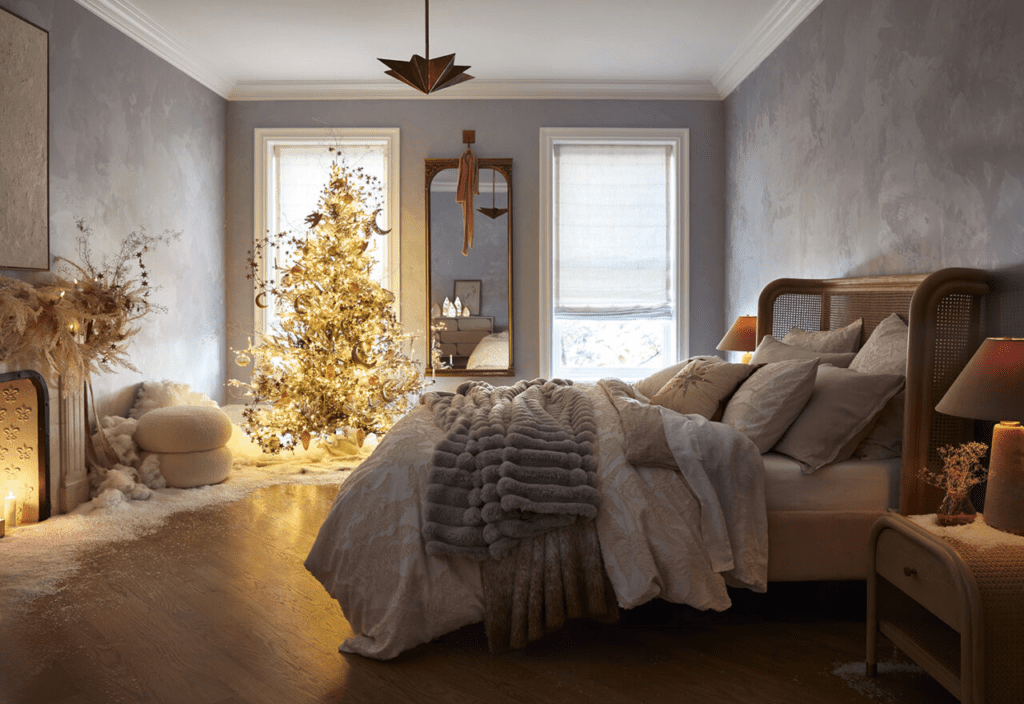

Another holiday-themed NYC pop-up brought together poultry brand Butterball with Bumble for Friends for a “Friendsgiving” event based around a simple premise: that no one should be alone during Thanksgiving. Promobile and the two brands created an NYC-based pop-up that offered New Yorkers without holiday plans a place to go. The custom-designed pop-up created a room perfect for mingling, a cheerful yellow, blue, and white space dotted with conversation starters and other icebreaking tips, a photo backdrop, and small tables for guests to congregate around.
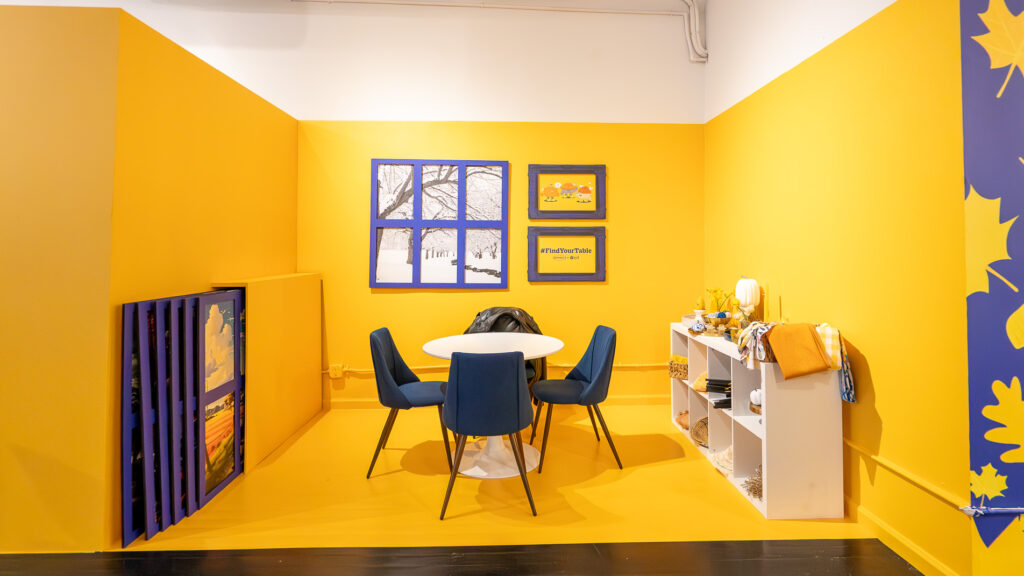

Building an Emotional and Physical Journey
Leading bone broth brand Kettle & Fire had a complex story to tell about America’s flawed food system, and the brand’s pledge to work toward repairing it. The brand wanted to tell that story in a way that would resonate with the public, get its message across, and highlight its products (and those of similarly-minded companies).
But that’s a complex, nuanced topic, one that spans generations and covers a lot of ground scientifically, socially, and commercially. How could the brand deliver that level of education in a way that would hold visitors’ attention?
In fall 2023, the brand worked with Promobile Marketing to create a pop-up–activation hybrid event that would take attendees through the flawed food system and the practices Kettle & Fire has adopted for a healthier future.
Staged in New York City’s SoHo neighborhood, the pop-up created an immersive six-part experience. Called “Kettle & Fire Turns the Tables on Thanksgiving,” the activation led guests through a multi-part installation that was part museum, part demonstration, part game, and fully immersive. The journey captured participants’ undivided attention by mixing sensory stimuli with hands-on activities.
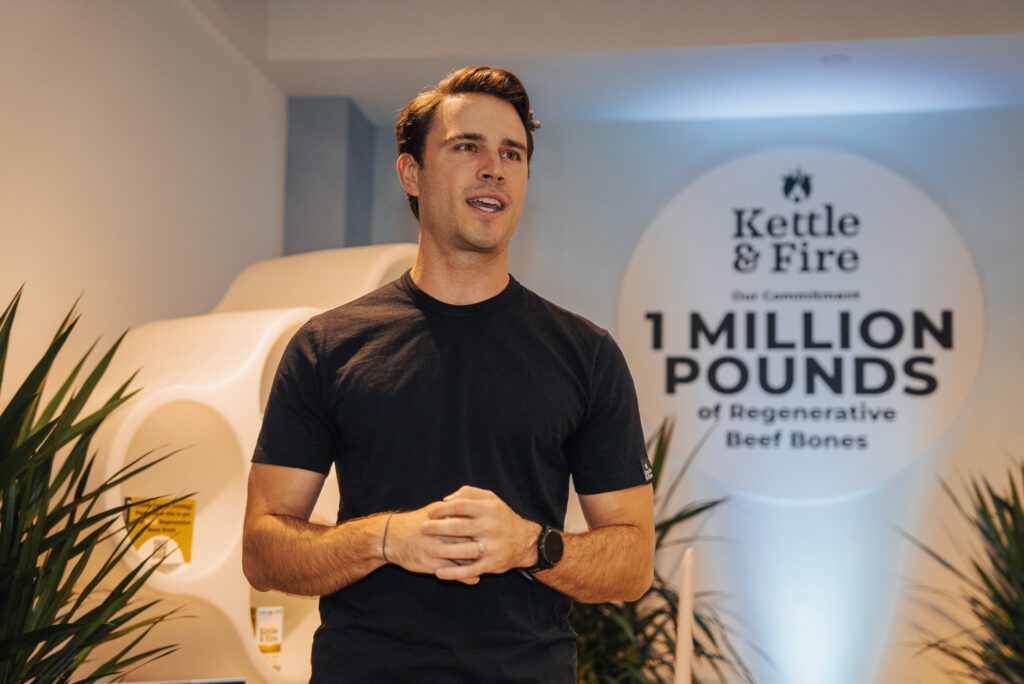

Upon arriving at the event, guests received a product sample to taste — a cup of Kettle & Fire’s bone broth — then were ushered into a mock grocery store called “Unlock the Toxin Truth,” where they shined flashlights on shelves stocked with traditional Thanksgiving items; blacklight text revealed the herbicides and additives in seemingly wholesome foods. Next, they viewed a lifesize projection wall mapping changes in farming practices over the last 100 years, then explored a comparison of how meat, chicken, and vegetables have changed over time in ways that reduce nutrient density. As a hopeful resolution to these issues, the journey concluded with a luxurious table set with a wholesome, nutritious Thanksgiving menu curated by a chef/influencer. On the way out, guests entered a curated pantry that showcased similarly sustainability-minded brands.
Custom installations like these play a crucial role in elevating pop-ups and brand activations beyond mere showcases, fostering deeper consumer participation and solidifying brand connections.
Installations break the ice by creating an environment that invites customers to engage with the brand through touchscreens, AR/VR experiences, games, or workshops. This active participation creates a positive association and boosts memory retention.
Social sharing is both enabled and encouraged throughout. Photo- and video-ready setups encourage photo and video sharing, expanding reach and generating organic buzz. Users become brand advocates, amplifying the activation’s impact.
Building installations around known customer preferences or demographics increases user investment and makes them feel valued. And along the way, interactive installations let brands gather valuable data about customer preferences and behaviors, informing future marketing strategies.
Promobile Marketing is a dynamic experiential marketing agency based in New York City. For over a decade, Promobile Marketing has collaborated with a range of brands—from budding startups to major CPG brands—on immersive marketing campaigns. Get in touch to discuss your next project.
